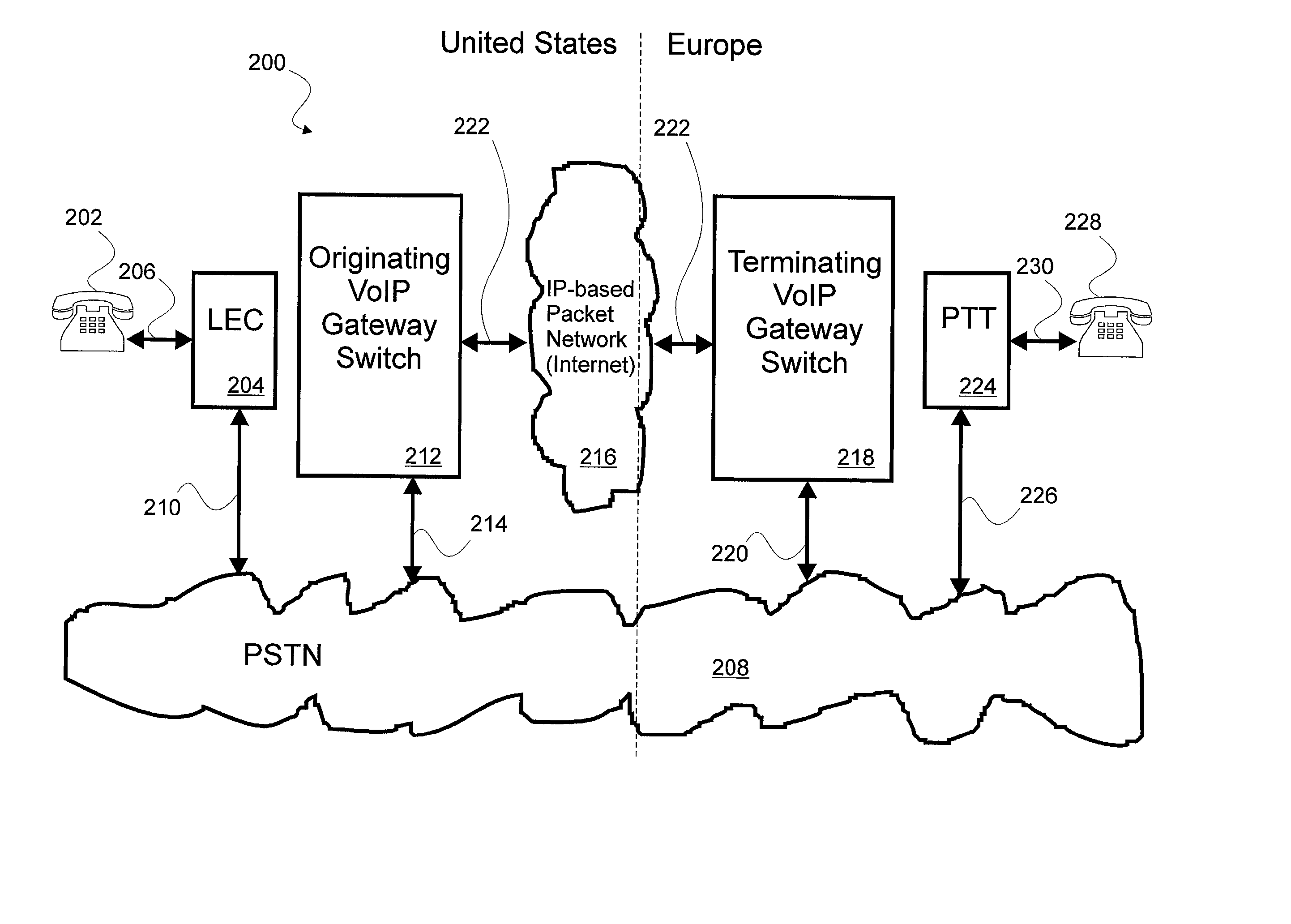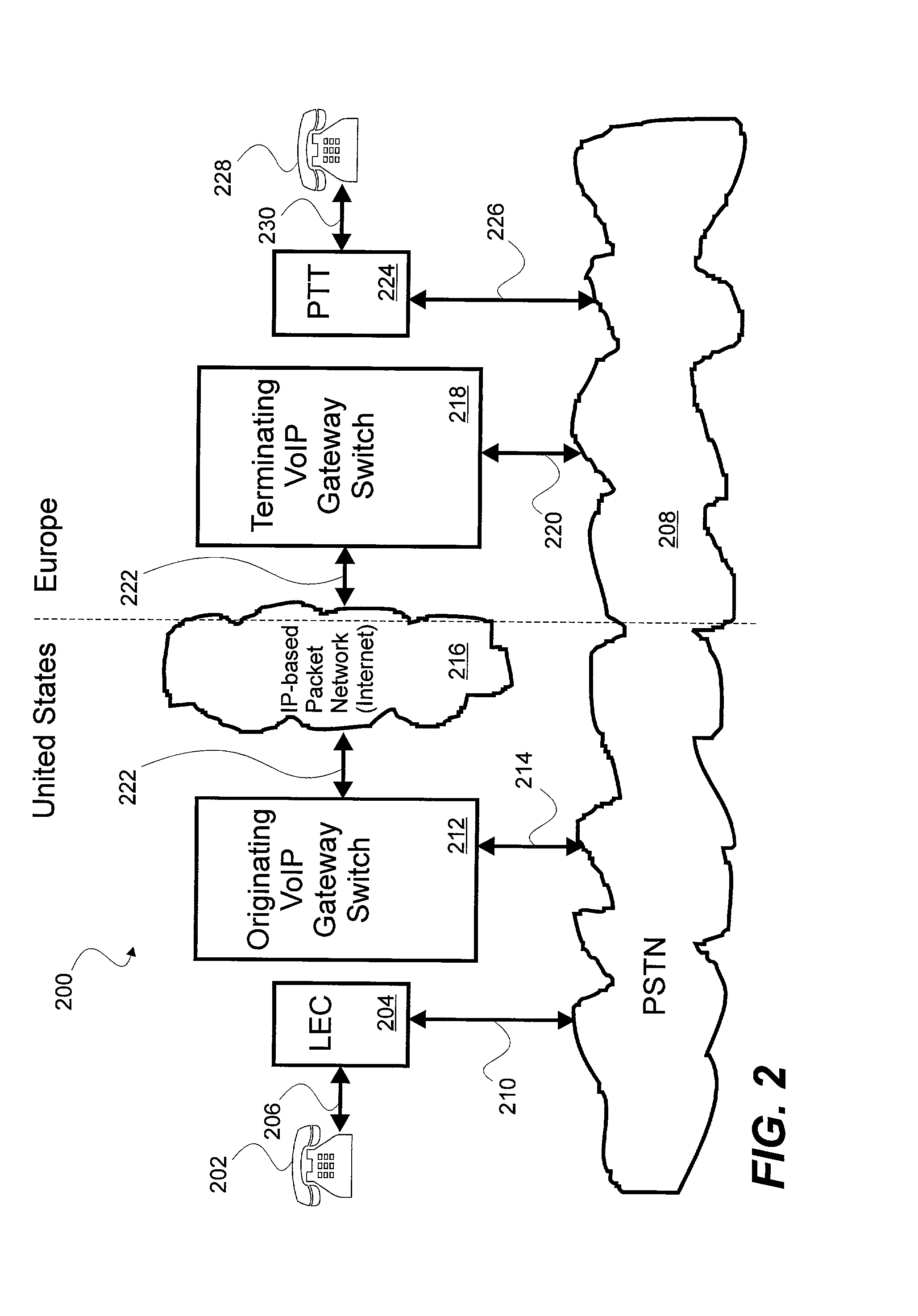System, apparatus and method for voice over internet protocol telephone calling using enhanced signaling packets and localized time slot interchanging
a voice over internet protocol and telephone call technology, applied in the field of system, apparatus and method for voice over internet protocol telephone call, can solve the problems of high access cost, high access cost, and not particularly well suited to other forms of communication, and achieve the effect of reducing the number of calls
- Summary
- Abstract
- Description
- Claims
- Application Information
AI Technical Summary
Problems solved by technology
Method used
Image
Examples
Embodiment Construction
[0038] Broadly speaking the invention is a system, apparatus and method for voice over Internet protocol (VoIP) telephone calling using enhanced SS7 signaling packets and localized time slot interchanging. The system, apparatus and method of the present invention addresses many of the problems associated with the prior art systems for VoIP telephone calling. VoIP telephone calling using the system, apparatus and method of the present invention are made more quickly than with conventional VoIP gateways using conventional VoIP gateway protocols such as H.323, Media Gateway Control Protocol (MGCP) and Session Initiation Protocol (SIP), etc. The system, apparatus and method of the present invention may provide for least cost routing look ahead and selection of available circuit switched telephone network trunk including onboard IP-based packet network switching resources. The system, apparatus and method of the present invention may also provide for increased telephone call capacity, re...
PUM
 Login to View More
Login to View More Abstract
Description
Claims
Application Information
 Login to View More
Login to View More - R&D
- Intellectual Property
- Life Sciences
- Materials
- Tech Scout
- Unparalleled Data Quality
- Higher Quality Content
- 60% Fewer Hallucinations
Browse by: Latest US Patents, China's latest patents, Technical Efficacy Thesaurus, Application Domain, Technology Topic, Popular Technical Reports.
© 2025 PatSnap. All rights reserved.Legal|Privacy policy|Modern Slavery Act Transparency Statement|Sitemap|About US| Contact US: help@patsnap.com



